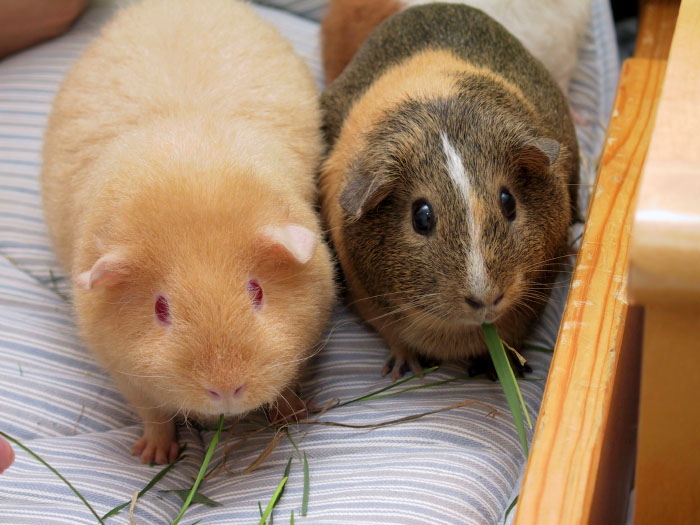Today is not a task-completion day. Everyone needs a day or two off every now and then, and the bed renovation had some bits & pieces to tidy up anyway. I’m aiming to start getting the cat furniture (climbing shelves and some whole-tree climbing toys made from trees removed during the house build) finished and installed over the next few days.
 For the moment, though, here’s another animal profile: Guinea Pigs (Cavia porcellus), also known as cavies or cuy, although ‘cuy’ is usually used to refer to meat breed cavies. Yes – guinea pigs are kept as meat animals by many people across South and Central America, and were originally raised not as cute, fluffy domestic pets but as a low-maintenance protein source. That’s also why we’re considering keeping them.
For the moment, though, here’s another animal profile: Guinea Pigs (Cavia porcellus), also known as cavies or cuy, although ‘cuy’ is usually used to refer to meat breed cavies. Yes – guinea pigs are kept as meat animals by many people across South and Central America, and were originally raised not as cute, fluffy domestic pets but as a low-maintenance protein source. That’s also why we’re considering keeping them.
Cavies aren’t as efficient as rabbits in terms of meat production under most conditions. They don’t breed as often or have as many young as rabbits (both rabbits and cavies can have 4 – 5 litters per year, but where a meat breed rabbit might have a litter of 6 – 12 kits, a cavy sow’s litter will generally be only 2 – 6 pups) and they’re smaller at maturity (0.5 – 1 kg compared to 2 – 3 kg for a 10 week old rabbit). On the other hand, cavies are immune to myxomatosis, and there are no similar diseases which are likely to cause mass die-off of our stock. We didn’t have good luck with rabbits.
As a herd animal, cavies should never be kept alone. They need to have a social group, and the most effective breeding group is one boar per three to five sows. A group can include multiple boars, and they will establish a dominance hierarchy without damaging one another much – a bit of fur chewing, but nothing too serious. Boars can be sexually active from 3 – 5 weeks old, and sows from about 4 weeks; if a sow over 6 – 8 months of age has never carried a litter and becomes pregnant, there are significant risks of complications.
Broadly, adult cavies weight 700g – 1.2 kg. They may be black, brown, beige, white, cream, grey, speckled or ticked, or any combination of these colours in multiple patterns. There are several mutations giving rise to different fur characteristics, which have been bred up to create the various breeds of cavy (‘rex’ and ‘sheltie’ cavies, for example).
What cavies need:
- Water – Cavies, like all other animals and birds, need clean, fresh water to be available at all times.
- Food – The natural diet of cavies is grass; they must have hay or grass available at all times, and they must have fresh, green grass and/or vegetable scraps to provide them with vitamin C. Like humans, cavies cannot manufacture their own vitamin C, and will get scurvy if they don’t have a dietary source of it.
- Shelter – Cavies don’t deal well with getting wet and cold – they get sick and often diue. They need somewhere dry and warm to sleep, and somewhere to hide from the rain.
- Space – A single cavy needs a minimum of 70 square cm. Two cavies can happily live in 1 sqm, and a good rule is to allow 1 sqm per 2 cavies. Obviously, more is better if you can do it.
- Warmth – Cavies will do fine in most weather, although they can become ill if they get wet and cold.
What cavies have to offer:
- More cavies – 3 – 5 litters per year, of 1 – 6 pups (average of 3 pups per litter). Baby cavies are able to move around and eat solid food soon after birth.
- Meat – Cavy meat tastes similar to rabbit or chicken, although it is a bit fattier than rabbit; it is mild flavoured, and roasts well. Also useful for feeding to cats or dogs, or other carnivorous companion animals.
- Manure – Cavy manure is good fertiliser, similar to rabbit manure.
Image sourced from Wikimedia Commons: https://commons.wikimedia.org/wiki/File:Two_adult_Guinea_Pigs_(Cavia_porcellus).jpg